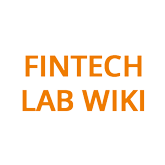The core developers of a dao
Definition
The core developers are in charge of developing the software that is, for all intents and purposes, the skeleton on which the decentralized autonomous organization operates, and they define, together with the founders of the organization, the rules referred to in the whitepaper, which can basically be traced back to the smart contract.
In other words, the members of the core developing team are the only ones who hold the key to being able to modify the code. In this sense, each line of code constitutes to all intents and purposes, on the one hand, a strategic or managerial choice of the organization, involving the entire blockchain and, therefore, all participants in the network, and on the other hand, a technical choice that is functional to reflect the defined objectives.
The developers, it is pointed out, are not directly accountable to token holders.
In most cases, core team members are part of the bodies of associations or foundations, which are thus responsible for coordinating and promoting the network underlying the DAO, while also making strategic choices.
References
- P. Hacker, Corporate Governance for Complex Cryptocurrencies ? A framework for Stability and Decision Making in Blockchain-Based Organizations, 22 Nov 2017, p. 11, https://papers.ssrn.com/sol3/papers.cfm?abstract_id=2998830
- R. Piselli, Quando la decentralizzazione delle DLT incontra il mercato dei capitali. Appunti sulle organizzazioni decentralizzate, in AGE, 2019, p. 386.
- C. Santana, L. Albareda, Blockchain and the emergence of Decentralized Autonomous Organizations (DAOs): An integrative model and research agenda, in Technological Forecasting & Social Change, 2022, p. 5.





